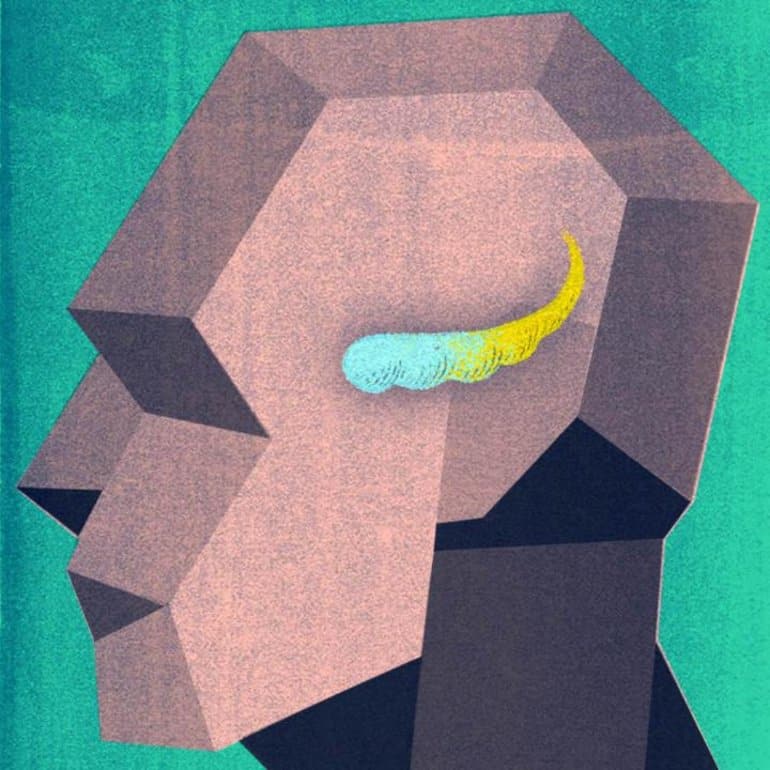Summary: Researchers have identified significant differences in gene activity between the anterior and posterior areas of the hippocampus. Genes associated with depression and other mood disorders are more active in the anterior hippocampus, while genes linked to cognitive disorders, such as ASD, are more active in the posterior hippocampus.
Source: UT Southwestern Medical Center
A study of gene activity in the brain’s hippocampus, led by UT Southwestern researchers, has identified marked differences between the region’s anterior and posterior portions.
The findings, published today in Neuron, could shed light on a variety of brain disorders that involve the hippocampus and may eventually help lead to new, targeted treatments.
“These new data reveal molecular-level differences that allow us to view the anterior and posterior hippocampus in a whole new way,” says study leader Genevieve Konopka, Ph.D., associate professor of neuroscience at UTSW.
She and study co-leader Bradley C. Lega, M.D., associate professor of neurological surgery, neurology, and psychiatry, explain that the human hippocampus is typically considered a uniform structure with key roles in memory, spatial navigation, and regulation of emotions. However, some research has suggested that the two ends of the hippocampus – the anterior, which points downward toward the face, and the posterior, which points upward toward the back of the head – take on different jobs.
Scientists have speculated that the anterior hippocampus might be more important for emotion and mood, while the posterior hippocampus might be more important for cognition. However, says Konopka, a Jon Heighten Scholar in Autism Research, researchers had yet to explore whether differences in gene activity exist between these two halves.
For the study, Konopka and Lega, both members of the Peter O’Donnell Jr. Brain Institute, and their colleagues isolated samples of both the anterior and posterior hippocampus from five patients who had the structure removed to treat epilepsy.
Seizures often originate from the hippocampus, explains Lega, who performed the surgeries. Although brain abnormalities trigger these seizures, microscopic analysis suggested that the tissues used in this study were anatomically normal.
After removal, the samples underwent single nuclei RNA sequencing (snRNA-seq), which assesses gene activity in individual cells. Although snRNA-seq showed mostly the same types of neurons and support cells reside in both sections of the hippocampus, activity of specific genes in excitatory neurons – those that stimulate other neurons to fire – varied significantly between the anterior and the posterior portions of the hippocampus.

When the researchers compared this set of genes to a list of genes associated with psychiatric and neurological disorders, they found significant matches. Genes associated with mood disorders, such as major depressive disorder or bipolar disorder, tended to be more active in the anterior hippocampus; conversely, genes associated with cognitive disorders, such as autism spectrum disorder, tended to be more active in the posterior hippocampus.
Lega notes that the more researchers are able to appreciate these differences, the better they’ll be able to understand disorders in which the hippocampus is involved.
“The idea that the anterior and posterior hippocampus represent two distinct functional structures is not completely new, but it’s been underappreciated in clinical medicine,” he says. “When trying to understand disease processes, we have to keep that in mind.”
Other UTSW researchers who contributed to this study include Fatma Ayhan, Ashwinikumar Kulkarni, Stefano Berto, Karthigayini Sivaprakasam, and Connor Douglas.
Funding: This work was funded by grants from the National Institutes of Health (NIH grants NS106447, T32DA007290, T32HL139438, NS107357), a University of Texas BRAIN Initiative seed grant (366582), the Chilton Foundation, the National Center for Advancing Translational Sciences of the NIH (under Center for Translational Medicine award UL1TR001105), the Chan Zuckerberg Initiative (an advised fund of the Silicon Valley Community Foundation, HCA-A-1704-01747), and the James S. McDonnell Foundation 21st Century Science Initiative in Understanding Human Cognition (scholar award 220020467).
About this genetics research news
Source: UT Southwestern Medical Center
Contact: Press Office – UT Southwestern Medical Center
Image: The image is credited to Melissa Logies
Original Research: Closed access.
“Resolving cellular and molecular diversity along the hippocampal anterior-to-posterior axis in humans” by Genevieve Konopka et al. Neuron
Abstract
Resolving cellular and molecular diversity along the hippocampal anterior-to-posterior axis in humans
Highlights
- •Analysis of single-nuclei transcriptomes along the human hippocampal longitudinal axis
- •Excitatory neurons show transcriptional heterogeneity across the axis
- •Cell-type- and axis-specific enrichment of disease-associated genes
Summary
The hippocampus supports many facets of cognition, including learning, memory, and emotional processing. Anatomically, the hippocampus runs along a longitudinal axis, posterior to anterior in primates.
The structure, function, and connectivity of the hippocampus vary along this axis. In human hippocampus, longitudinal functional heterogeneity remains an active area of investigation, and structural heterogeneity has not been described.
To understand the cellular and molecular diversity along the hippocampal long axis in human brain and define molecular signatures corresponding to functional domains, we performed single-nuclei RNA sequencing on surgically resected human anterior and posterior hippocampus from epilepsy patients, identifying differentially expressed genes at cellular resolution.
We further identify axis- and cell-type-specific gene expression signatures that differentially intersect with human genetic signals, identifying cell-type-specific genes in the posterior hippocampus for cognitive function and the anterior hippocampus for mood and affect.
These data are accessible as a public resource through an interactive website.






